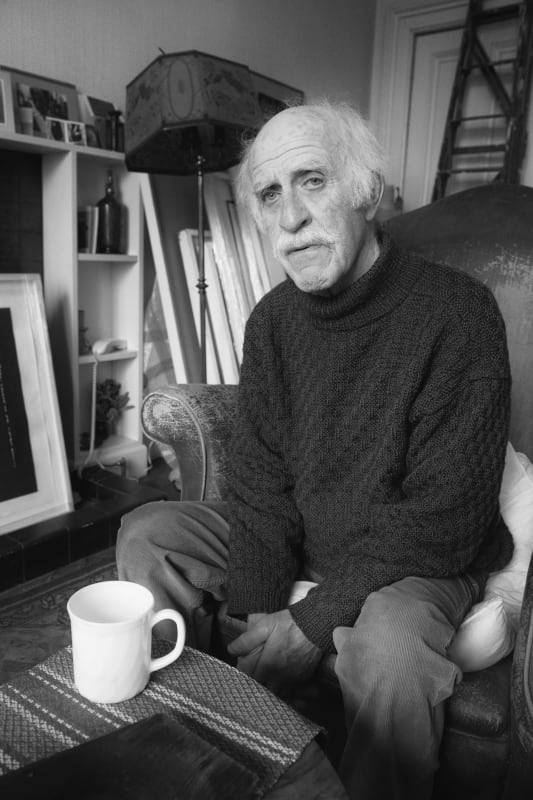Philip Reeves RSA was born in Cheltenham in 1931. His father was a commercial printer and sympathetic toward his ambitions to go to art school. Reeves attended Cheltenham School of Art before undertaking National Service (1949-51) which he served firstly with the 8th Royal Tank Regiment and then with the 4th/7th Royal Dragoon Guards in Libya. Whilst in the army Reeves carried a small sketchbook and pen behind his paybook in his top pocket in which he drew army bases and tanks.
On completion of his National Service, Reeves gained a scholarship to study at the Royal College of Art (RCA), London, where he was taught by the esteemed printmaker Robert Austin. John Bratby and Edward Middleditch, exponents of the ‘kitchen sink school’ that favoured a style of gritty realism, were Reeves’ contemporaries, as well as Bridget Riley. He also came under the influence of Eric Ravilious and Paul Nash, both of whom carried the torch for a Modernist sensibility in Britain. Despite these Modernist influences, during his time at the RCA Reeves produced etchings of London cityscapes in what he described as a ‘very traditional’ style.
Coming to the end of his course at the RCA in 1954, Reeves gained a job teaching etching at Glasgow School of Art (GSA). He would go on to become a Senior Lecturer and Head of Printmaking at the school in 1970, teaching at the school until his retirement in 1991. The reach of Reeves’ influence during his long tenure at GSA is evident in the high regard placed on him by his students, many of whom have themselves gone on to receive great acclaim.
Reeves was elected an Associate of the Royal Scottish Academy in 1971 and an Academician in 1976. He was also an active member of the Society of Scottish Artists and the Royal Glasgow Institute of Fine Arts. He served as a president of the Royal Society of Scottish Painters in Watercolour and was a fellow of the Royal Society of Painters, Etchers and Engravers. A major retrospective of his work was mounted in 2001 jointly at the Talbot Rice Gallery, Edinburgh, and the Hunterian, Glasgow. His work is included in the collections of the British Museum; the Fleming Collection; Glasgow Art Galleries and Museums; Aberdeen Art Gallery; Edinburgh University; Art in Healthcare; and Glasgow School of Art.

